Farmers Weekly Awards 2014: Dairy finalists
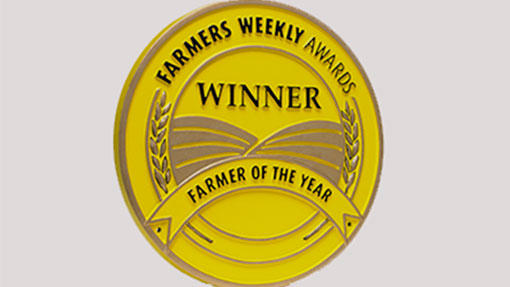
Not only are this year’s three dairy finalists spread over three countries, they have also taken three different approaches to profitable milk production, as Richard Allison discovers.
Robert Craig and Steve Brandon
Dolphenby Farm, Cumbria
Cumbria is renowned for its green, rolling countryside, but one of its biggest resources – grass – is still largely untapped.
That’s the view of two experienced farmers who are taking a New Zealand approach to grassland management.
They have taken the best bits from their own farms to establish a successful new dairy farming business in the heart of the Eden Valley, following their tried-and-tested approach.
Steve Brandon and Robert Craig were among the farmers pioneering extended grazing when it gained popularity more than 10 years ago. But in the years since, they have honed their systems.
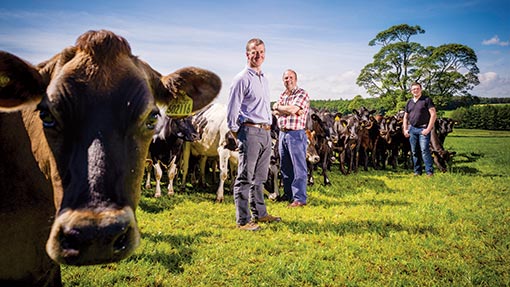
The joint initiative started in 2011 when Steve, who farms in Staffordshire, was looking to expand and secured the tenancy at Dolphenby Farm. Cumbrian farmer Robert then came on board, having long shared Steve’s interest in the New Zealand approach.
Dolphenby Farming Partnership was born and they took on herd manager Mark Housby and built a team of four full-time staff topped up with relief milkers.
It was a rapid start. The tenancy began in October 2011 and, just six months later, they had 400 in-calf heifers calving down, sourced from their own farms as well as six others.
Farm facts
- 1,273ha of grassland, including 12ha of spring undersown cereal
- 530 milking cross-bred cows, averaging nearly 5,500 litres, 149 bulling heifers plus 101 heifer calves
- Team of four full-time staff plus three relief milkers
- Grazing for nine months
- Surplus cows sold as summer calvers
NZ approach
The New Zealand approach is to efficiently convert grazed grass into milk solids, so Robert and Steve’s milk contract – paid purely on milk solids – suits the system. They supply the Lake District creamery at Aspatria as members of First Milk.
“It works as they are after solids for cheese production,” says Robert. Within their first year Mark and his team won the milk quality award for the highest quality and cleanest milk.
Converting grass to milk solids relies on efficient grazing for as many days of the year as possible. “This year, cows went out on 25 February and we will aim to graze until late November,” says Steve.
He adds that it is a dry farm on light sand soil, which lends itself to the extended grazing system.
Having the right genetics and grass management are key and the pair use cross-bred cows, which are very fertile and hard-working grazers. From his experience, Robert believes the ideal mix is three-quarter NZ black and white and one-quarter NZ Jersey.
Cows get fresh grass every 12 hours and paddocks are grazed on an 18- to 24-day cycle. “We aim to alternate grazing with cutting for silage to keep pastures tidy.”
To make full use of the high-quality spring grass, they operate a strict 12-week calving block. Cows that fall outside the window are sold locally as summer calvers.
Investment
Substantial investment was required, with £1.2m spent on livestock, a new 20:40 herringbone parlour, collecting yard, cubicles, water mains, creating 50 new paddocks and a 1m gallon slurry store.
“The farm didn’t really have a cow track system, which is essential if you are grazing early February to late November. So we installed three miles of track using old concrete railway sleepers and local sandstone,” says Steve.
The extra slurry is seen by Robert as a valuable resource applied to fields after making silage by an umbilical system to maximise its use. This has enabled them to cut fertiliser use.
Staff management
Robert and Steve actively mentor and develop staff, who they see as key to success. They even sent Mark to NZ for three weeks intensive study to learn how to manage seasonal calving herds.
“While he had extensive dairy knowledge, he had little knowledge of grazing,” says Steve.
The farm also takes on college students, with one currently from Harper Adams. Robert has a vision of eventually starting a post- graduate scheme developing the next generation of Kiwi-style farmers, learning in NZ.
They both recognise the value of hosting visits by students, as well as non-farming groups, such as Friends of the Lake District. More than 1,000 people have visited Dolphenby since the unit was established three years ago, helping to spread the word on the value of the Kiwi approach to grazing.
But the real innovation at Dolphenby is the replication of a tried-and-tested, highly sustainable model of milk production and rapidly establish a 500-cow herd.
Jonathan Wilkinson
Dyffryn Farm, Powys
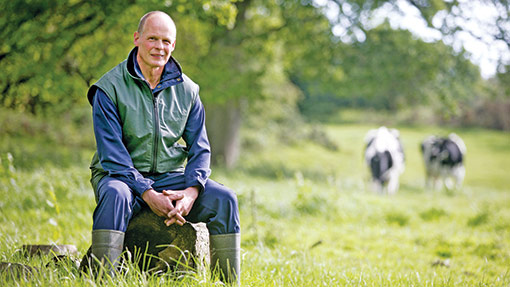
Four years ago the Wilkinson family faced a difficult decision: get out of dairying or invest and expand the herd to survive.
Milking 180 Holstein cows was taking more than four-and-a -half hours through a small herringbone parlour, recalls Jonathan Wilkinson. “We looked at other enterprises, including poultry.”
Finally, he decided to go for cows and expand. Jonathan was spurred on by his brother-in-law who had a rotary parlour and he saw the potential it would offer.
He invested in a new building with a 44-point GEA external rotary and collection yard, which he designed himself. This allowed him to double cow numbers to 320, increasing turnover by 50%, and he has plans to reach 400.
He has adopted the latest technology and he is particularly pleased with a three-way race. Using electronic ID, he can automatically shed cows into AI pens, foot-trimming crush or PD races. There is also a foot-bath with an infrared counter, which counts cows through and replenishes solution when needed.
The collecting yard is cleaned by an innovative high-volume flush system that uses recycled water. Water is collected locally on the hillside and piped to the dairy where it is used three times.
First it cools the milk through the cooler, then it is used to wash down the parlour and this water is then pumped into a tank that feeds the auto yard-flush system.
Farm facts
- 155ha of grassland
- Co-operates with local farmers to grow forage crops
- 320 Holstein cows, averaging 9,400 litres plus 200 youngstock
- Team of three full-time staff
- Water used three times
Performance
Performance has risen by 1,000 litres in the past 12 months, now averaging 9,400 litres, with 3.91% fat and 3.3% protein. He puts some of this increase down to an overhaul of dry cow management, as well as the enthusiasm of herdsman Carl Poole and his team.
“Over the past 12 months, I’ve focused on the straw intake of dry cows and have increased the inclusion to 5kg a head by using a grinder. Cows that are bit overcondition also get a dry cow bolus.
“Three weeks before calving, they receive dry cow rolls and magnesium chloride and since then we have seen very few milk fever cases and retained cleansings.”
Grazing
Jonathan has also put greater focus on grazing. His farm is roughly split, half in the bottom of the valley of the River Vyrnwy, which floods each year, and half on higher boulder clay land rising to 300ft above sea level.
Because of the wet conditions, extended grazing is not an option and he even sometimes has to house the high yielders at night in summer.
“Our biggest challenge is getting cows out early enough in the year and, in the past, undergrazing has been a problem. But we are now getting a better handle on grass management.
He has invested in cow tracks and opted for concrete, as the valley bottom can experience strong currents when flooded, washing any other material away.
Jonathan has also reseeded some of the poorly performing pastures with permanent ryegrass leys and timothy on wetter land, being more resilient.
Historically the farm was 100% grass and grass silage, but maize silage and wholecrop now feature in rations. “We have definitely seen an improvement in cow health since including maize.”
Expansion has meant having to secure land for forage and he has relationships with five local farmers to grow maize and cereals for wholecrop and crimping.
The extra land has been secured through a combination of being approached, bidding for opportunities and simply knocking on doors. “Having a good relationship with landlords is key,” he adds.
Replacements are reared in-house and he has been using some genomic sires to speed up genetic improvement, as well as sexed semen on heifers to increase herd size more rapidly. He is a firm believer in type, as longevity will come with type.
Spreading the word
Jonathan also believes farmers need strong representation and the Welsh sector is benefiting from his experience in his role as NFU Cymru county chairman and vice-chairman of the Welsh Milk board.
He is particularly keen to spread the word on milk production, and for school and farmer visits makes use of the special viewing platform in the new dairy.
“We also jointly work with Wynnstay with farmer groups, spending the morning touring the mill at Llansantffraid and then visiting our farm in the afternoon.”
Jonathan has secured a much brighter future for the family farm and has plans to expand further and establish a dedicated youngstock rearing unit. He is showing the way forward in the challenging land in this valley in mid-Wales.
Alex Robertson
Coopon Carse Farm, Wigtownshire
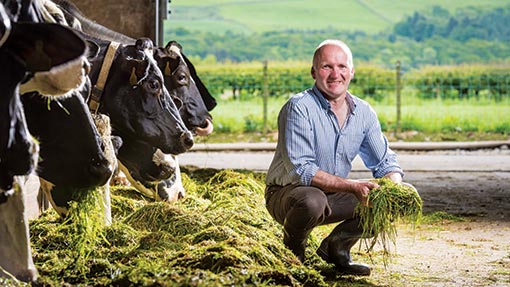
An estuary floodplain does not sound like the ideal place to graze high-yielding cows, but Alex Robertson is making a success of it on the Dumfries coast.
Faced with an average annual rainfall of 1,800mm and farming largely silt, clay reclaimed marsh, he has brought the grass to the cows, which are housed indoors year round.
Cows have been housed for 20 years and fed a grass silage-based total mixed ration. But in 2012, Alex embarked on zero-grazing to save on concentrate use.
“We can grow really good grass here and we already had the two forage wagons, as we looked to maximise the number of silage cuts.
“Last year the saving in bought-in concentrates totalled £45,180,” he says. Overall feed costs are now down to 12p/litre.
“If we made it into silage it would cost us £11.26/t fresh, compared with £4.65/t for fresh grass. This includes the cost of diesel and the time spent each morning [one hour] cutting and bringing in the fresh grass.
Zero-grazing involves cutting about 1ha/day, which equates to about 33kg fresh grass a day in the ration. “Last year was the best year ever and we were grazing right through to 4 October,” he recalls.
Farm facts
- 263ha of grassland plus 25ha rented for heifer rearing
- 500-cow Holstein herd averaging 10,300 litres with more than 200 followers
- Team of six full-time staff plus four part-time
- Housed all year round and milked three times daily
- Surplus pedigree heifers sold at six months and in milk
Genetics
The idea came from the sister farm in the Netherlands, as Coopon Carse is owned by Dutchman Wijnand Pon, who also owns Alta Genetics. So it’s no surprise that breeding also plays a part in the business, with additional revenue generated from sales of surplus youngstock.
His 500-cow pedigree Holstein herd is approaching 10,500 litres, but his philosophy is improving efficiency rather than pushing all-out for yields.
Only genomic bulls are used and he selects them on production including milk fat, protein plus productive life. “Those with a good productive life will also have a good type.”
His focus on productive life has seen 33 cows enter the exclusive 100t club, this success means he has run out of shelf space for the trophies.
He picks five bulls at a time and herd is closed except for several bulls brought over from the sister farm in Holland.
Youngstock
Using top genomic sires also means he can sell surplus top-end genetics to local farmers plus 30 bulls a year.
He recently changed his rearing approach, investing in new calf housing and having a dedicated member of staff solely responsible for youngstock.
“We decided to go with hutches as you can’t guarantee being pneumonia-free with a building here in Dumfries. Since investing in 50 hutches, we haven’t seen a single case this year while last year, we spent £2,250 treating respiratory problems.”
At the same time, he invested in a pasteuriser for colostrum and waste milk to save on powder, which he calculates to be saving £8,550/year.
Innovation
Alex makes full use of the latest technology including pedometers for heat detection which he describes as “a bit like a Wii handset” measuring cow activity
“They monitor movement and it has proved to be a godsend.”
He has seen a reduction in vet time through better heat detection with a calving interval of 397 days and an average 2.6 services to conception.
Pedometers are also proving valuable in managing lameness and he noted that his cows spent less lying down time than those in Holland.
“So we changed our routine as they were standing too long in the collecting yard increasing risk of lameness.
Alex values his staff and sees good communication being vital in managing the herd, with all staff meeting for morning coffee. “Many are working in different areas of the farm and you find out if there are any niggles or other problems.”
Protecting the environment is another priority for Alex. “Cows are in sheds year-round, so we want to be seen to be looking after the environment.”
He manages 33ha of natural habitat under the Scottish Rural Development Programme on the small area of higher land.
A word from our sponsor
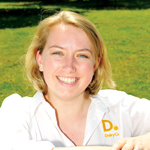 “The finalists are passionate about dairy farming, striving to develop their businesses and inspiring others. The determination they demonstrate to be successful deserves recognition and is something we should all be proud of.”
“The finalists are passionate about dairy farming, striving to develop their businesses and inspiring others. The determination they demonstrate to be successful deserves recognition and is something we should all be proud of.”
Rachael Chamberlayne, senior product manager – dairy economics, DiaryCo

